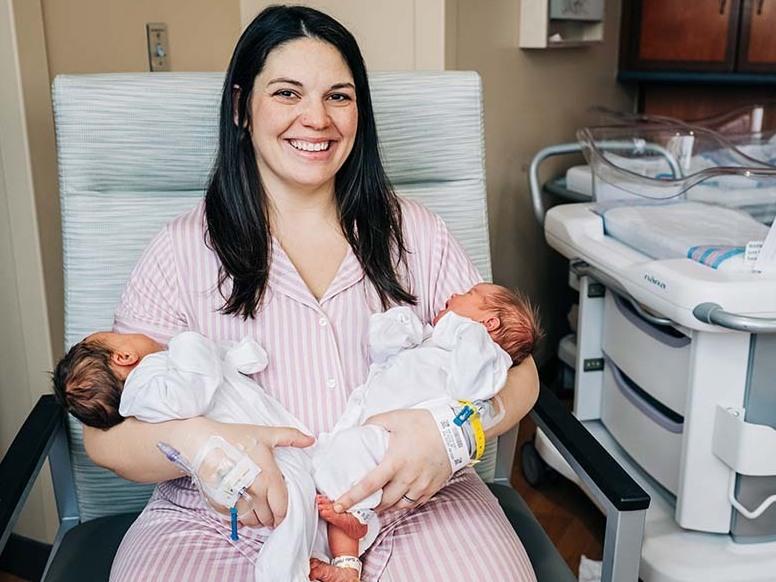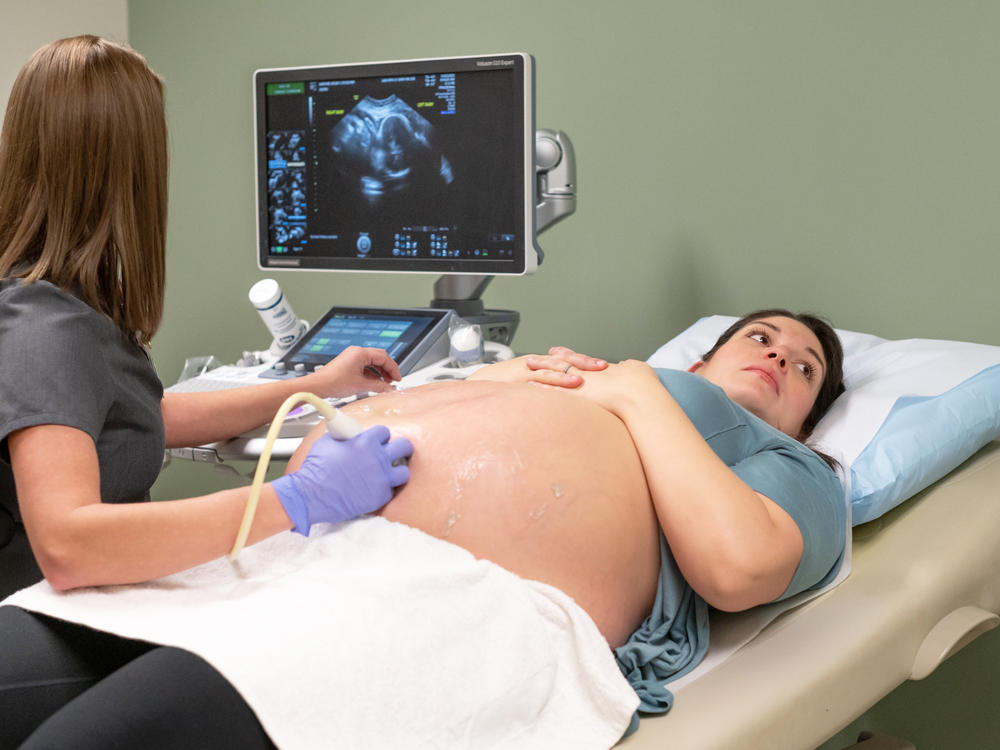Section Branding
Header Content
Alabama mom is 1-in-a-million, delivering two babies, from two uteruses, in two days
Primary Content
Thirty-two-year-old Kelsey Hatcher welcomed two beautiful baby girls into the world last week, delivering fraternal twins at the University of Alabama at Birmingham Hospital. But unlike typical twins, the newborns came from two separate wombs.
Hatcher vaginally delivered her first baby, Roxi, at 7:45 p.m. on Dec. 19, followed by Rebel, who was delivered by c-section about 10 hours later on Dec. 20.
Her experience is what's known as a dicavitary pregnancy, according to a University of Alabama at Birmingham news release. The National Library of Medicine says this type of pregnancy is believed to be a 1-in-a-million occurrence.
Hatcher was a teen when she was diagnosed with uterus didelphys, commonly referred to as a double uterus, which occurs in 0.3% of women, according to the Cleveland Clinic. She also has two cervixes. And though she had three typical pregnancies in years past, Hatcher's fourth go around threw Hatcher's obstetrician, Dr. Shweta Parel, for a loop when the first ultrasound showed two fetuses in two uteruses.
"I had already taken care of Kelsey through her third pregnancy and knew she had a double uterus, but that was only one baby — two babies in two uteri were a true medical surprise," Patel told the university's communications department.
Parel, who's also an assistant professor in the school's Department of Obstetrics and Gynecology, co-managed Hatcher's pregnancy alongside Dr. Richard O. Davis, professor in the school's maternal-fetal medicine department, who specializes in high-risk and unique cases. The university says that neither doctor, in their nearly 60 years of combined experience, had delivered dicavitary twins.
However, given the unusual circumstances of Hatcher's pregnancy, some wondered whether or not the newborns constituted twins, which the university says is defined by two babies in one uterus in the same pregnancy.
Davis told the communications department it's safe to say they're fraternal twins.
"At the end of the day, it was two babies in one belly at the same time," he said. "They just had different apartments."
Copyright 2023 NPR. To see more, visit https://www.npr.org.


